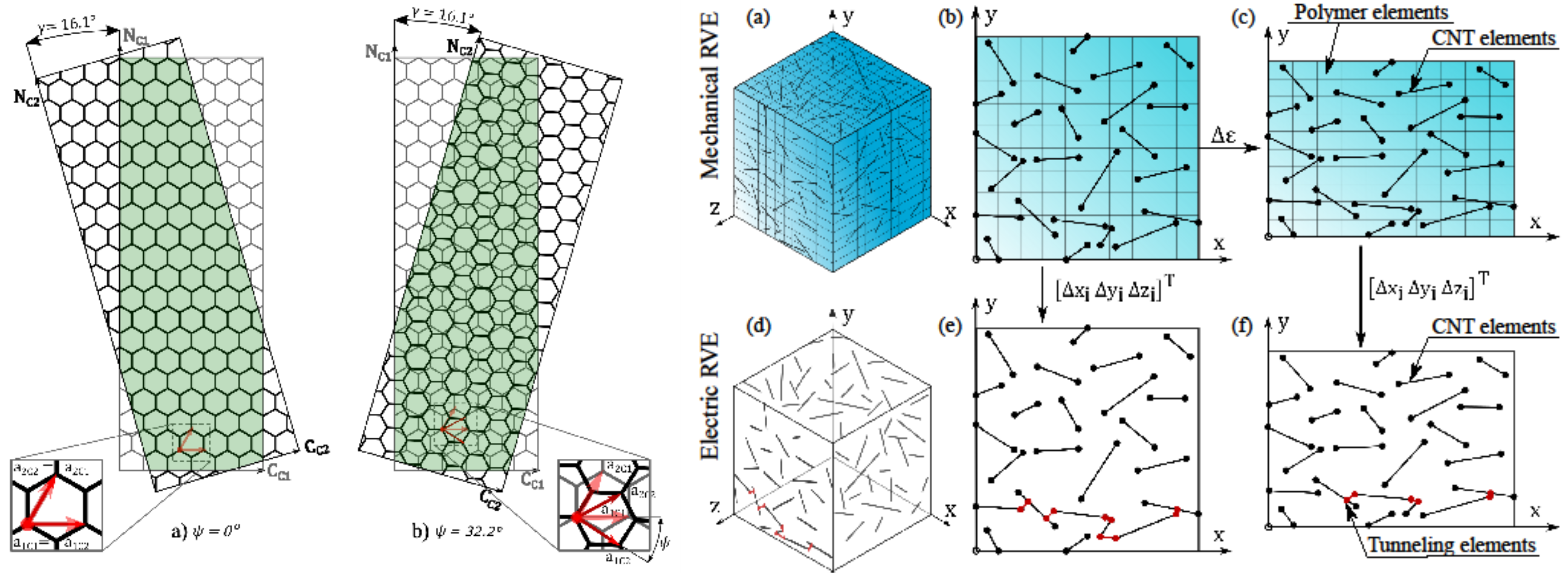Multifunctional Materials
We create materials with multiple superior characteristics including lightweight, stiffness, flexibility, electrical conductivity, thermal conductivity, and ease of manufacturing. Our research focuses on thermoplastic composites embedded with different carbon forms such as carbon nanotubes, carbon fiber weaves, and pyrolytic graphite sheets.
Piezoresistive Carbon Nanotube Polymer Composites

Carbon nanotube polymer composites exhibit piezoresistivity that can be utilized for flexible strain sensors. Piezoresistive modeling is critical for improving sensor performance, but remains a challenging subject due to the complex CNT network microstructure and the various effects occurring at both the micro and nano scales. Tunneling conduction between CNTs is the primary mechanism underlying piezoresistivity in carbon nanotube polymer composites. Existing models have employed a myriad of assumptions on the CNT network kinematics and the tunneling conduction behavior, but their physical basis and effects have not been thoroughly studied. In this paper, a detailed evaluation on these modeling assumptions is presented with the goal of establishing an approach without ad hoc assumptions and improved predictive accuracy. A computational model that is capable of tracking the history of tunneling separation of each CNT junction is first constructed. The effects of CNT extensibility, tunneling cross-section, conduction channels are studied via statistical analysis of the tunneling conduction and comparison of computed piezoresistive response. It is found that CNT inextensibility leads to higher predicted piezoresistivity, the tunneling cross-section area in the Simmons approximation is a highly influential parameter, and the Landauer formula provides a more physically based approach that accounts for CNT properties.